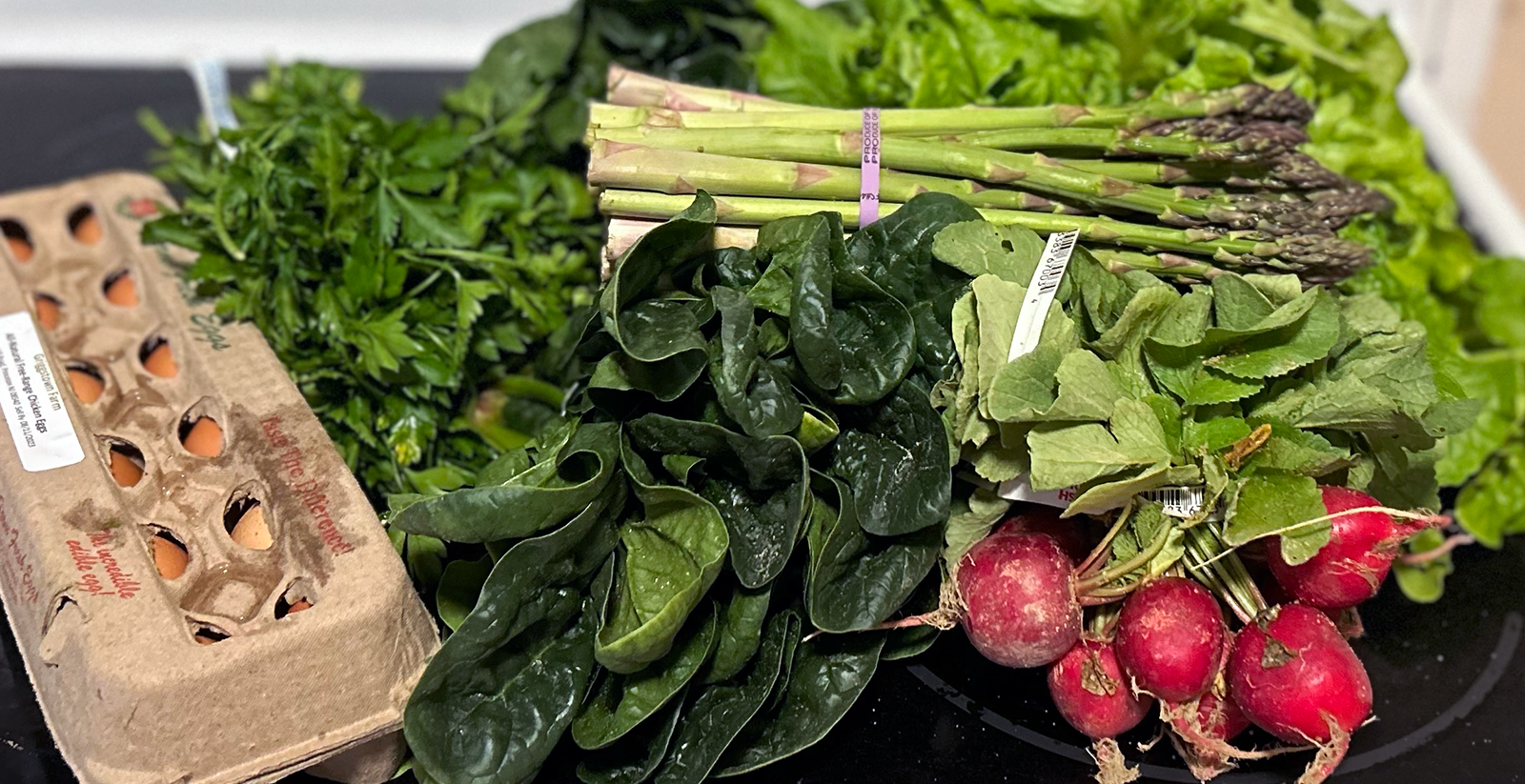It’s the time of year most of us have been waiting for: warmer weather! While some people welcome this change of season with a turn-the-home-upside-down spring-cleaning spree, others will head straight to their nearby seasonal farmers market, re-launched for the first time since autumn. In an ever-evolving food and beverage industry still adapting to an increase of e-commerce grocer options, farmers markets remain a stalwart of the food shopping experience. Whether you consider yourself a savvy foodie or you frequently find yourself intimidated by shopping for groceries, there are opportunities for you to save money and learn something new about the province-grown products available to you.
The following tips can help you shop confidently at a farmers market with cost-effective savings top-of-mind.

Buy in Bulk
It’s most efficient for vendors to offer large quantities of items at a lower price point than for individual sale. When produce is at its harvest peak, farmers look to move stock while it’s fresh, and this is to the benefit of buyers! You can take advantage of the bulk deals while guaranteeing the most flavorful, ripe produce. Avoid stressing over the excess by arriving at the market prepared to bring home a large volume, knowing that a portion of it can be frozen or pickled and consumed months later.

Shop End-of-Market
If you want the widest selection of goods, get to the farmers market early, but for the best savings, shop at the farmers market later in the day. Vendors frequently offer discounted prices in the last hour of the market to avoid loading all the goods back in the van. Note: some markets have rules against end-of-market discounts.

Talk with the Farmer
Although farmers may spend most of their time in their fields, many of them (and their employees) delight in the opportunity to talk with shoppers about their offerings. You, as the consumer, can not only learn about new varieties of produce or locally made goods like cheese and wine on offer at the market, but you also stand the chance of having an extra item tucked in your bag or striking a cost-savings deal with the farmer.

Have a Budget
Many of us have experienced firsthand the financial perils of going grocery shopping on an empty stomach. The same is true at the farmers market. Try to go after eating a meal or snack. To avoid overspending, give yourself a budget before you land at the market – then stick to it. For help in determining what your allocated groceries spending should be based on your financial situation, use a resource like the TD Personal Cash Flow Calculator.

Prep Ahead: Think Seasonal
If your biggest obstacle at the farmers market is a sense of overwhelm at the options and what to choose, do some research and preparation at home first. Think primarily about what foods are growing in the season you’re in, and what dishes you would want to make using those items. Find recipes, make lists of what you need to put together the meal, and then simply execute the plan once you’ve made it to your farmers market destination, avoiding the urge to make impulse purchases that stray from your plan. Alternatively, you can reverse engineer this process when you get home and use a site like “My Fridge Food” to make the most of the produce you bought.
When you’re preparing to make your way to your local market, remember that if you bring your own bag to the market, you’re not only helping reduce waste and being kind to the environment, you’re also saving the farmer on overhead costs, which might inspire the added perk of a slight discount. The rise of convenience shopping continues but farmers markets continue to offer a guarantee of the freshest and most local fruits, vegetables, and sundry pantry staples. It is a unique resource that offers connection with the grower and provides basic food education and is an opportunity to support the local economy and – last but not least – to save money on groceries if you go about it in a strategic way.
For more on personal finance topics
If you have more questions about other personal finance topics that matter to you, visit the Learning Center on TD Bank’s website.
We hope you found this helpful. This article is based on information available in May 2023 and is subject to change. It is provided as a convenience and for general information purposes only. Our content is not intended to provide legal, tax, investment, or financial advice or to indicate that a particular TD Bank or third-party product or service is available or right for you.
For specific advice about your unique circumstances, consider talking with a qualified professional.
Links to third-party sites do not constitute an endorsement or an approval by TD Bank of any of the products, services or opinions of the corporation or organization or individual. TD Bank bears no responsibility for the accuracy, legality, or content of the external site or for that of subsequent links. Any third-party trademarks or service marks mentioned herein are the property of their respective owners. Contact the external site for answers to questions regarding its content. See our website Terms of Use for more information.
